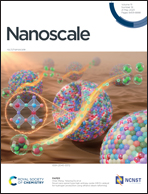Ultrabroadband hot-hole photodetector based on ultrathin gold film†
Abstract
Hot carriers injected into semiconductor enables below-bandgap photodetection, thus attracting increasing interest. The performance of hot carrier-based device is directly related to the absorptivity of metal. Several strategies such as surface plasmons, metamaterials, and optical cavities are utilized to enhance the weak intrinsic absorption of the metal. However, the detection range is limited by their narrow resonance bandwidth alternatively. Impedance-matched absorbers, whose sheet resistance is equal to half of the free-space impedance (188 Ω), can achieve a wavelength-independent absorptivity up to 50%. Herein, we theoretically design a purely planar hot-hole photodetector based on ultrathin gold film, a new type of metallic impedance-matched absorber. Benefiting both from the efficient absorption and ultrathin nature of the film, we predict that the photoresponsivity of our device can reach 35.7 mA W−1 under zero bias at the wavelength of 1.3 μm, with a full width at half maximum (FWHM) of detection range reaching 1050 nm, setting a new record for the bandwidth of the hot carrier photodetectors. We also demonstrated that the device is robust to the incident angle and can be tuned through the external bias voltage. This work provides a pathway for broadband hot carrier detectors and other hot carrier-based applications.



 Please wait while we load your content...
Please wait while we load your content...